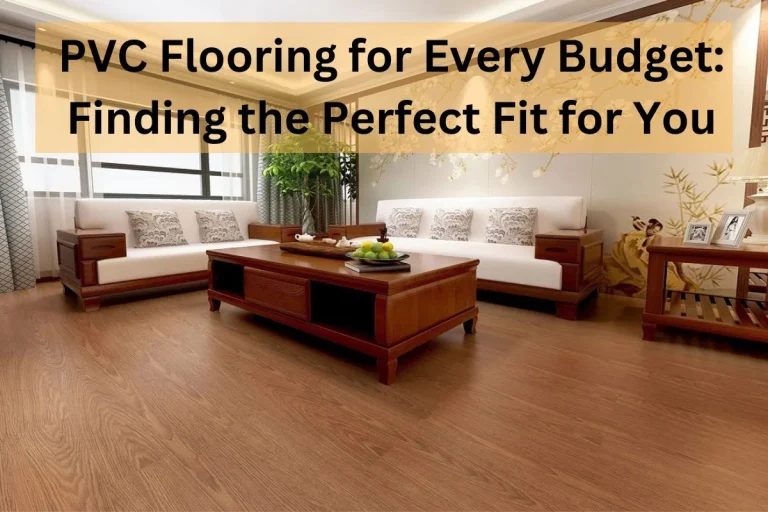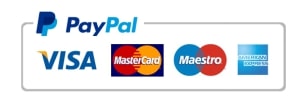Vinyl flooring has emerged as a popular choice for commercial spaces due to its versatility, durability, and aesthetic appeal. With advancements in technology and design, vinyl flooring offers an array of benefits that make it well-suited for various commercial environments. From offices and retail stores to healthcare facilities and hospitality venues, vinyl flooring presents an attractive flooring solution that meets the demands of modern commercial settings. In this article, we will explore the benefits and considerations of using vinyl flooring in commercial spaces, highlighting its advantages and addressing important factors to consider when choosing vinyl flooring for commercial applications.
Introduction to Vinyl Flooring
Vinyl flooring stands as a versatile and popular choice among homeowners and designers alike, offering a blend of durability, affordability, and aesthetic appeal. In this section, we delve into the fundamentals of vinyl flooring, exploring its composition, characteristics, and the reasons behind its widespread adoption in modern interior design. From its inception to its evolution into a contemporary flooring solution, vinyl flooring has established itself as a go-to option for both residential and commercial spaces. Let’s embark on a journey to understand the essence of vinyl flooring and its role in shaping the ambiance of our living environments.
Definition and Overview of Vinyl Flooring
Vinyl flooring is a synthetic flooring material made primarily from polyvinyl chloride (PVC) and other additives. It is engineered to mimic the appearance of natural materials such as wood, stone, and tile, offering a wide range of design options to suit various interior styles and preferences.
Vinyl flooring is available in different formats, including vinyl tiles, planks, and sheets, each offering unique benefits and installation methods. With advancements in technology, vinyl flooring now comes in various textures, patterns, and finishes, providing homeowners and designers with endless possibilities for creating stylish and functional spaces.
One of the key features of vinyl flooring is its durability and resilience to wear and tear, making it suitable for high-traffic areas such as kitchens, bathrooms, and entryways. It is also water-resistant and easy to clean, making it a practical choice for spaces prone to spills and moisture.
In addition to its practicality, vinyl flooring is known for its affordability compared to other flooring options such as hardwood or ceramic tile. This cost-effectiveness, combined with its versatility and low maintenance requirements, makes vinyl flooring a popular choice for both residential and commercial applications.
Overall, vinyl flooring offers a durable, versatile, and budget-friendly flooring solution that adds style and functionality to any space. Its ability to replicate the look of natural materials while offering enhanced durability and ease of maintenance has cemented its position as a top choice in the world of interior design.
Vinyl flooring presents a multitude of advantages and disadvantages, each influencing its suitability for different environments and preferences. Understanding these factors can aid in making informed decisions regarding flooring choices. Let’s delve into the advantages and disadvantages of vinyl flooring:
Advantages:
Durability: Vinyl flooring is highly durable and resistant to scratches, dents, and stains, making it ideal for high-traffic areas and households with pets and children.
Water Resistance: Many vinyl flooring options are waterproof or water-resistant, making them suitable for moisture-prone areas such as kitchens, bathrooms, and basements.
Versatility in Design: Vinyl flooring comes in a wide array of colors, patterns, and styles, including options that mimic natural materials like wood, stone, and tile, providing endless design possibilities.
Affordability: Vinyl flooring is typically more budget-friendly compared to hardwood, laminate, or tile flooring, offering an attractive option for cost-conscious consumers.
Comfort Underfoot: Some vinyl flooring options feature built-in underlayment or cushioning, providing a softer and more comfortable surface to walk on compared to harder flooring materials.
Disadvantages:
Volatile Organic Compounds (VOCs): Some vinyl flooring products may emit volatile organic compounds (VOCs), which can contribute to indoor air pollution and may pose health risks, especially in poorly ventilated spaces.
Susceptibility to Fading: Vinyl flooring may fade over time when exposed to prolonged sunlight or ultraviolet (UV) radiation, particularly in rooms with large windows or glass doors.
Environmental Concerns: Vinyl flooring is made from synthetic materials derived from petroleum, which raises environmental concerns related to resource depletion and pollution during manufacturing and disposal.
Difficult to Repair: While vinyl flooring is durable, it can be challenging to repair if damaged. In cases of severe damage, the entire flooring may need to be replaced, which can be costly and time-consuming.
Not Biodegradable: Vinyl flooring is not biodegradable and can contribute to landfill waste at the end of its lifecycle, posing long-term environmental implications.
Types of Vinyl Flooring
Vinyl flooring comes in various types, each offering distinct features, benefits, and installation methods to suit different preferences and requirements. Here are the primary types of vinyl flooring:
Luxury Vinyl Tile (LVT):
- Luxury vinyl tile (LVT) closely replicates the appearance of natural materials like stone or ceramic tile.
- It is available in individual tiles with realistic textures and patterns, offering a high-end look without the high cost.
- LVT is often preferred for its durability, water resistance, and ease of maintenance.
Vinyl Plank Flooring:
- Vinyl plank flooring mimics the look of hardwood flooring with authentic wood grain patterns and textures.
- It is available in planks that resemble traditional wood flooring in various widths and lengths, providing a realistic and warm aesthetic.
- Vinyl plank flooring is known for its durability, water resistance, and affordability compared to hardwood flooring.
Sheet Vinyl Flooring:
- Sheet vinyl flooring comes in large rolls and offers seamless installation with minimal seams compared to tiles or planks.
- It is available in a wide range of colors, patterns, and designs, including wood, stone, and tile looks.
- Sheet vinyl flooring is often preferred for its affordability, durability, and resistance to moisture.
Hybrid Vinyl Flooring:
- Hybrid vinyl flooring combines the benefits of vinyl with other materials such as stone or composite cores for enhanced durability and stability.
- It may feature rigid core technology, providing additional strength and resistance to indentation and wear.
- Hybrid vinyl flooring is suitable for areas with heavy foot traffic and potential moisture exposure.
Waterproof Vinyl Flooring:
- Waterproof vinyl flooring is specially engineered to resist water penetration and moisture damage.
- It features a waterproof core and a protective wear layer that prevents water from seeping into the flooring material.
- Waterproof vinyl flooring is ideal for areas prone to spills, moisture, and humidity, such as kitchens, bathrooms, and basements.
Printed Vinyl Flooring:
- Printed vinyl flooring allows for endless design possibilities with custom patterns, images, and graphics printed directly onto the vinyl surface.
- It can be customized to match specific themes, branding, or artistic expressions in residential and commercial spaces, offering unique and personalized flooring options.
Comparing Vinyl Flooring with Other Flooring Options
When considering flooring options for your home or commercial space, it’s essential to weigh the pros and cons of different materials to find the best fit for your needs and preferences. Let’s compare vinyl flooring with other popular flooring options:
Hardwood Flooring:
- Hardwood flooring offers a timeless and elegant look that adds value to any space.
- It is durable and can be refinished multiple times, extending its lifespan.
- However, hardwood flooring is more expensive than vinyl and requires regular maintenance, including refinishing and sealing.
Laminate Flooring:
- Laminate flooring is budget-friendly and available in a wide range of styles that mimic the look of hardwood, tile, or stone.
- It is durable and scratch-resistant, making it suitable for high-traffic areas.
- However, laminate flooring may not be as water-resistant as vinyl and can be prone to moisture damage in wet areas.
Ceramic Tile Flooring:
- Ceramic tile flooring is highly durable and resistant to moisture, making it ideal for bathrooms, kitchens, and other wet areas.
- It comes in various colors, patterns, and textures, offering endless design possibilities.
- However, ceramic tile can be expensive to install, and grout lines may require regular cleaning and maintenance.
Carpet Flooring:
- Carpet flooring provides warmth, comfort, and noise reduction, making it a cozy option for bedrooms and living areas.
- It comes in a wide range of colors, styles, and textures to suit any décor.
- However, carpet may not be as durable or easy to clean as vinyl, and it can harbor allergens and stains if not properly maintained.
Natural Stone Flooring:
- Natural stone flooring, such as marble, granite, or travertine, offers a luxurious and unique look.
- It is durable and can last for decades with proper care and maintenance.
- However, natural stone is expensive to install and may require professional maintenance to preserve its appearance over time.
Concrete Flooring:
- Concrete flooring is durable, low-maintenance, and can be customized with various finishes and stains.
- It is suitable for both indoor and outdoor applications and can complement modern and industrial-style interiors.
- However, concrete can be hard and cold underfoot, and it may require sealing to prevent moisture absorption and staining.
Proper maintenance and regular cleaning are essential for preserving the appearance and longevity of vinyl flooring. Here are some tips and techniques for maintaining and cleaning vinyl flooring effectively:
Regular Sweeping or Vacuuming:
- Remove loose dirt, dust, and debris from the surface of the vinyl flooring using a soft-bristle broom or a vacuum cleaner with a soft brush attachment.
- Regular sweeping or vacuuming prevents dirt and grit from scratching the vinyl surface and keeps the flooring looking clean.
Mopping with Warm Water and Mild Detergent:
- For routine cleaning, dampen a mop or microfiber cloth with warm water and a mild detergent solution.
- Avoid using harsh cleaners or abrasive scrubbers, as they can damage the vinyl finish.
- Mop the vinyl flooring in the direction of the grain or pattern to remove stains, spills, and stubborn dirt.
Avoid Excessive Water Exposure:
- While vinyl flooring is water-resistant, excessive moisture can seep into the seams and edges, causing damage over time.
- Wipe up spills promptly with a clean, dry cloth to prevent water from penetrating the flooring material.
- Use mats or rugs in entryways and high-traffic areas to trap moisture and prevent it from reaching the vinyl flooring.
Use Protective Pads and Furniture Protectors:
- Place felt or rubber pads under heavy furniture legs to prevent scratches and indentations on the vinyl surface.
- Avoid dragging heavy furniture or appliances across the vinyl flooring, as this can cause damage to the surface.
Avoid Harsh Chemicals and Abrasive Cleaners:
- Refrain from using abrasive cleaners, scouring pads, or bleach-based products on vinyl flooring, as they can dull the finish and cause discoloration.
- Opt for pH-neutral cleaners or specialized vinyl floor cleaners recommended by the manufacturer for deep cleaning.
Regular Maintenance of Grout Lines (if applicable):
- If your vinyl flooring has grout lines, inspect and clean the grout regularly to prevent buildup of dirt, mold, and mildew.
- Use a grout brush or toothbrush and a mild grout cleaner to scrub the grout lines gently.
Protective Coating and Sealants (if applicable):
- Some vinyl flooring products come with a protective coating or sealant that enhances durability and resistance to stains and scratches.
- Follow the manufacturer’s recommendations for reapplying sealants or protective coatings as needed to maintain the integrity of the flooring surface.
Conclusion
Vinyl flooring emerges as a versatile and practical flooring solution, offering a myriad of benefits for residential and commercial spaces alike. With its durability, water resistance, affordability, and wide range of design options, vinyl flooring stands out as a popular choice among homeowners, designers, and contractors.









